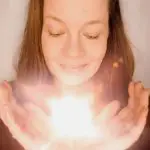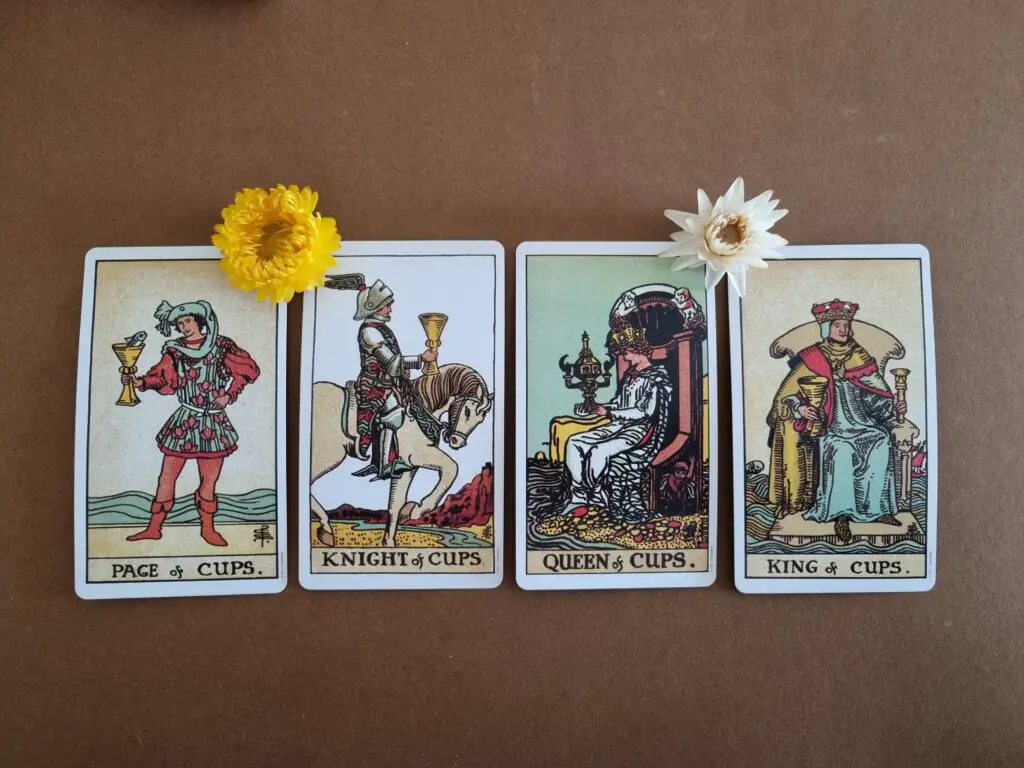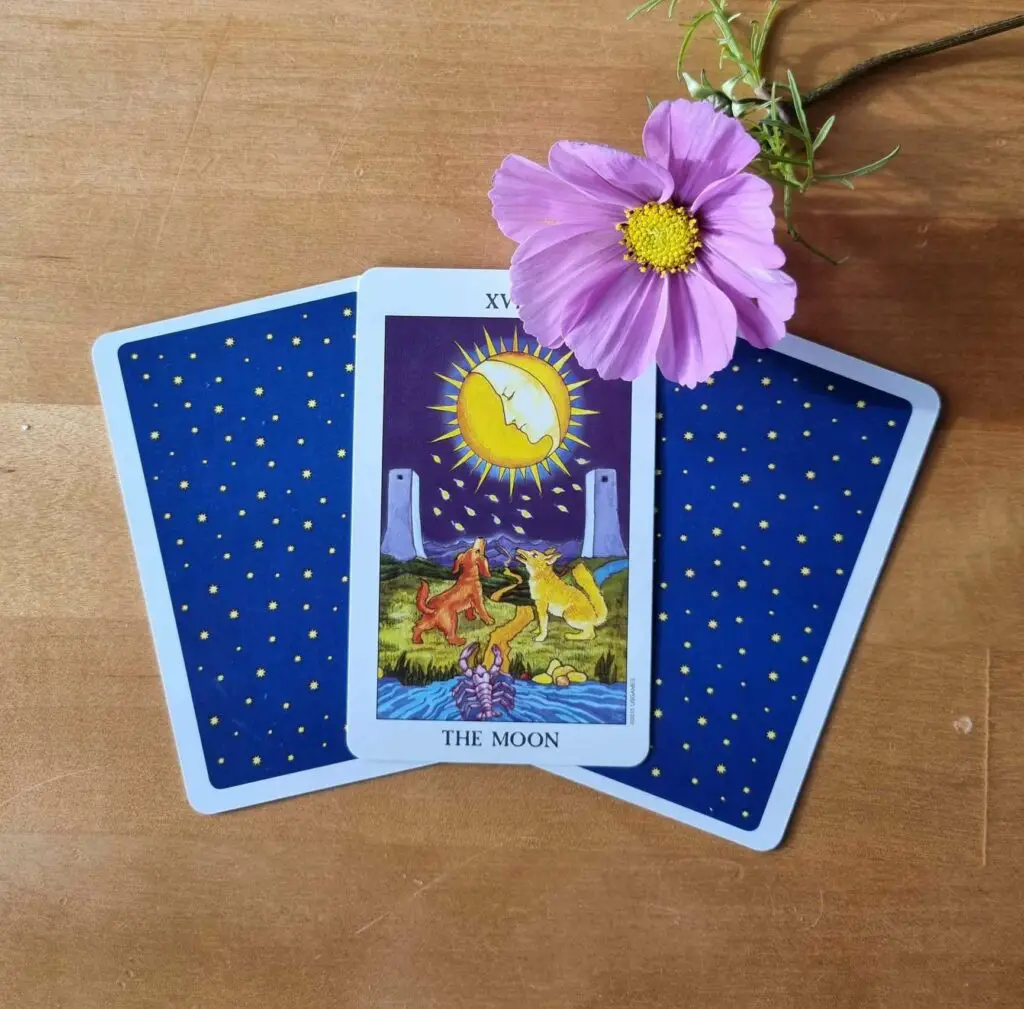It’s easy to understand that the Tarot might be perceived as a powerful tool to summon dark forces after watching spooky Hollywood movies and thrilling TV shows. But is it really a tool for black magic or Devil worship? One thing is sure though, there are lots of myths surrounding the Tarot.
As a general rule, Tarot is not a tool for exercising black magic or dark arts. The Tarot is not connected to any religion and is not part of any specific belief system. It’s a spiritual tool for exploring the unconscious- and subconscious mind, and the Jungian Archetypes.
As there are many laymen’s opinions regarding this topic, I consulted a professor in comparative religion why the Tarot is often associated with dark arts and Devil worship. This helps us to take a more scientific view on the topic. We find hints and clues in the history of the Tarot.
IS TAROT BLACK MAGIC?
First of all, let’s start by investigating the definition of Black Magic. When I look up the description in the online encyclopedia Britannica, there is no such thing as “black magic” – I was referred to an article about sorcery (link to Britannica).
The definition of black magic seems to lack set criteria and is fluid. It appears to be a mix of everything deemed occult or destructive magic.
The truth is that an occult practice can be both dark and light. All things occult do not have to have a sinister nature, and not Devil worship.
As there is no such thing as a universally agreed-upon definition of “black magic,” the Tarot can’t be defined as such. However, it might be deemed occult as it is not connected to any religion or specific belief system but used in a spiritual setting.
As occult magic is neither good nor bad, much depends on the practitioner’s intent. It’s what you do with the Tarot that will make it a tool of darkness or light.
Like the example of the knife, you can use it for slicing bread or stabbing someone. You can use a hammer to put a nail in a board, as well as smash it into someone… you get it. It is all about the practitioner, not the tool itself.
The practitioner might be a black magician or a Saint, for that matter. The Tarot cards are just a tool.
Like the example of the knife. You can use it for slicing bread or stab someone. You can use a hammer to put a nail in a board, as well as smash it into someone… you get it. It is all about the practitioner, not the tool itself.
Sandra Törnroth
So to sum things up, the Tarot cards themselves are just cards made of cardstock. They do not possess inherent magical powers of their own.
The Tarot reader uses them as a tool in their occult practice – may it be light, gray, or dark. The critical thing to note is that it does not need to be dark. It can be light or something in between as well.
The modern, in my opinion, way of using the Tarot is as a tool for self-development, discovery, and growth. There are no external energies summoned or spells cast. All attention is turned inwards. The aim is to connect to the subconscious and unconscious mind, storing what we call “intuition.”
The Tarot helps the reader to access the subconscious mind with psychological triggers and methods. The methods are based on psychology and not magic. Much of the ways are based on the Jungian archetypes – inherent human experiences.
Tarot is like everything else; it can be used for sinister things as black magic or dark arts – but as a general rule, it is not. It is foremost a tool for self-help, healing, and soul-searching – a tool of light and love.
WANT TO LEARN MORE?
Do you want to learn how the Tarot really works?
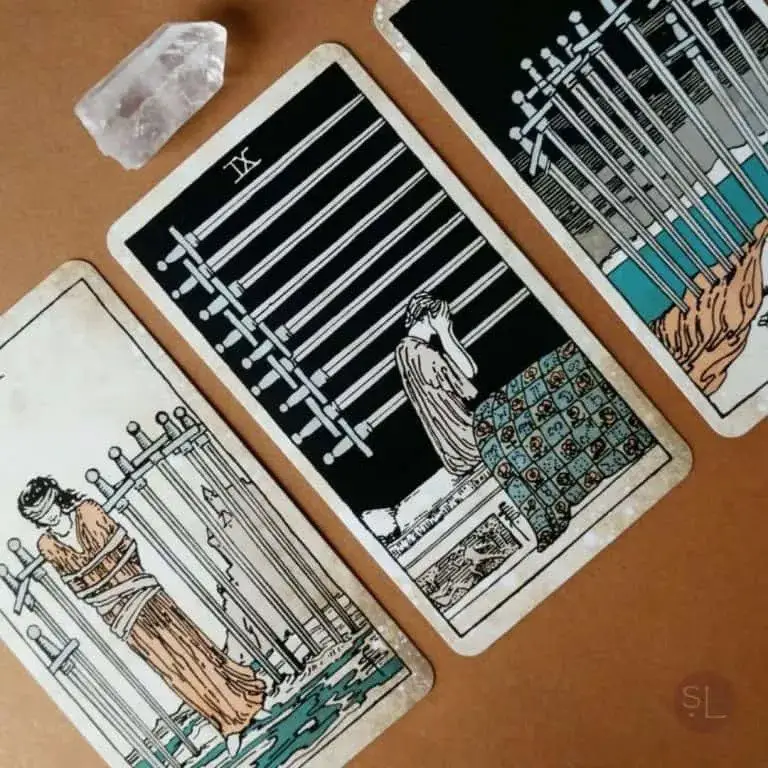
Even though some cards in the Tarot deck seem dark and scary at first, they only depict human experiences. They follow the system of Jung, even if he never stated they correlate. We all meet sorrow, despair, anxiety, fear, and hurt from time to time. The cards are a reflection of these occasions.
The Devil or Death card does not predict physical death or summon the Devil. They are metaphors for our experiences in life as well.
The Devil represents unhealthy bounds or addictions, and the Death card significant life changes. They have nothing to do with physical death or connections with the Devil himself.
These cards may look a bit scary at first. I guess they are misunderstood and then labeled “evil.” The imagery should be seen in the eyes of when they were created – in the 1300th century.
Many were not able to read, and the Christian and Regal symbols were a way to make a universal meaning to the cards that were easy to understand. As time has gone by, the purpose of the symbols has somewhat changed, and the original definitions are not as clear.
As the common knowledge about the Tarot grows, I hope that these misconceptions will vanish. The Tarot is a beautiful tool for self-help and development.
WHY TAROT IS ASSOCIATED WITH BLACK MAGIC
First of all, this article should be read in an historical context to explain why the Tarot might be seen as a part of the dark arts, not as a religious standpoint or argument in any way.
To fully understand why the Tarot sometimes is associated with black magic, we have to look at history. According to Claire Goodchild in her book “The Modern Tarot Reader” (Paid Link – Amazon), there are many theories about where the Tarot initially was created.
The Tarot is associated with black magic due to its historical relation to the monotheistic Church. The Bible condemns fortune-telling and mediums. All things boiled together with iconography read in the wrong historical context, lead to a belief that the Tarot is connected with the dark arts.
One theory is that the Tarot came from India, another that they were brought to Europe by Arabs. Some say the Romanis took the Tarot to Europe in 1417. In the late 1700s, the Tarot as a tool for fortune-telling started to appear. It was during this time the connection to astrology, numerology, and spirituality was created. During the 18th-century, people began using the Tarot for divination and occult practices.
Knowing all this and connecting it to the state religion, Christianity, we might untangle why the Tarot is often associated with the dark arts. Regardless of the origin of the Tarot, it is spiritual and not religious.
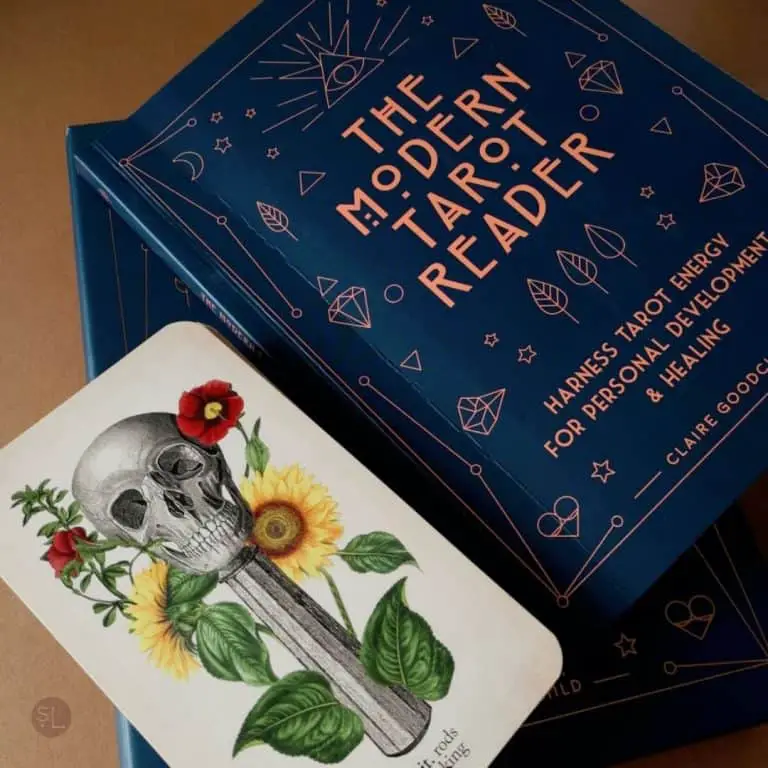
According to the Finnish professor in comparative religions, Anette Engström, Christianity does not promote anything that can be seen as occult. As there is only one God, you can’t receive “divine” messages from other sources. It’s during your lifetime you correct your wrongs, and when the Last Judgment is here, the only one to judge you is God. You can’t look for answers into the future, as you live here and now.
The future is in the hands of God and God alone. As we can’t change the future, there’s no need for fortune-telling. And it is even “banned” in the Bible.
There are passages in the Bible that condemn fortune-telling and seeking answers from psychic mediums. God is the only one with the answer.
Even though the Tarot was not invented when the Bible was written, many use the passages to ban using the Tarot.
In the example of Leviticus 19:31, it is clear that mediums and fortune-telling are not allowed: “Do not turn to mediums or necromancers; do not seek them out, and so make yourselves unclean by them: I am the Lord your God.”
This might be the reason for the Tarot to be associated with dark arts. The iconography on the cards themselves, read in the wrong context, might amplify this belief.
Overall, Christianity condemns rivaling deities and divination, not in the realm of the religion. This even though they do have Saints of their own. Due to this, it is easy to see why the Tarot was deemed black magic as it challenged the monotheistic belief system.
Historically condemning challenging belief systems is a method of protecting the Church and the State. This article has nothing to do with my personal view on religion or Christianity overall. It’s not to say religion is bad or wrong. I’m a Christian myself, practicing the Tarot as a tool for self-discovery and growth.
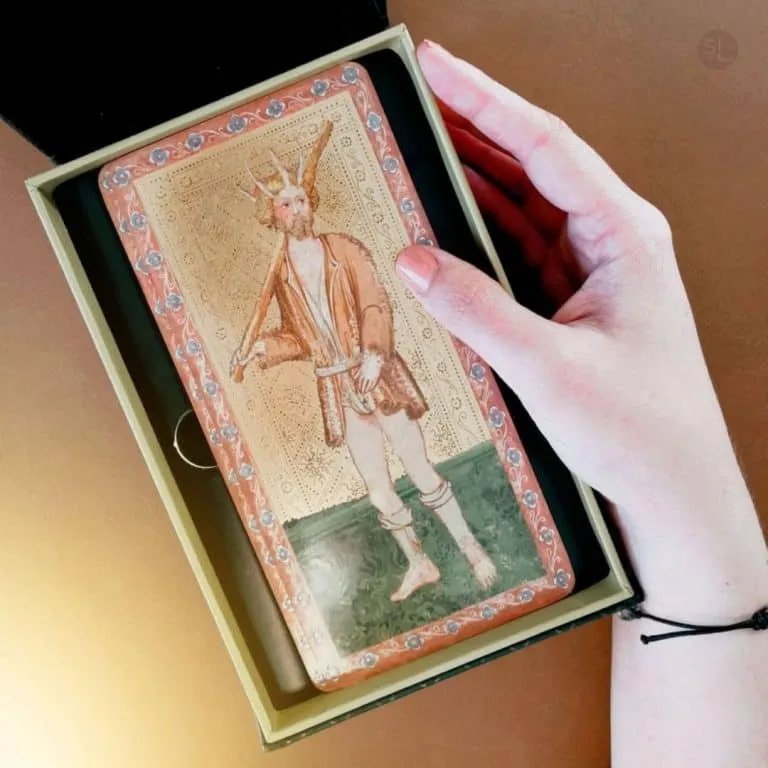
TAROT AS A PHENOMENON
The Tarot might be seen as an opposition to monotheistic religions, like Christianity. It is easy to understand how the Tarot sometimes gets a tainted reputation due to its nature as the underdog.
During the late 1800s and early 1900s, the spiritualist movement started implementing the Tarot in its practices. The Spiritualist believed there was a spirit world and that you could communicate with the afterlife, for example, through seances. The Tarot was used as a tool for fortune-telling, alongside many other tools and techiques.
Adding the opposition from the Church, the psychics that could foresee the future and talk to ghosts, and the somewhat scary (and misunderstood) imagery of the Tarot cards, modern pop culture started to use the Tarot as a cue for “evil” in movies and TV shows.
As the second wave of Spiritualism and New Age is here, the same frictions are surfacing. The less provocative narrative, where the Tarot is a tool for self-discovery, is less interesting, and therefore not seen as much in pop culture and the debate.
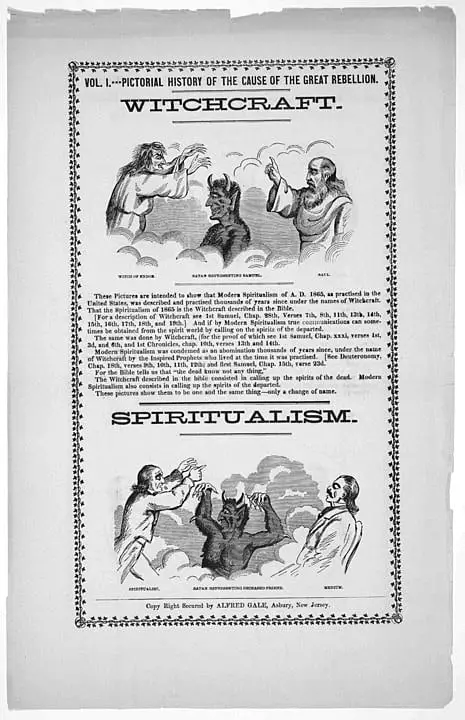
IS THE TAROT EVIL OR DANGEROUS?
Is the Tarot in any way, shape, or form dangerous or evil? The Tarot deck is made of card stock. The cards themselves do not have magical powers of their own. In that sense, they can not be evil or dangerous.
The Tarot is not evil or dangerous as they do not have inherent power. They are cards made of card stock with imagery on them. It is what we do with them that makes them “good” or “bad.” The intent behind the reading sets the rules, not the cards themselves.
As partially covered in the section above, what we do with the cards might make them dangerous or “evil.” The Tarot cards are just a tool mainly for spiritual guidance and self-discovery. As a dark magician or evil-minded practitioner might use the cards, they might be used for sinister deeds. But this is not common.
As medication – it can be used to heal as well as poison. It’s the intention that sets the stage.
You don’t need to fear the cards but the dark magician himself. The cards are not evil nor good – they are.
A Tarot reading does not have the power to change the future either. You are in charge of your destiny. Even if you experience that a card stirred up feelings of fear, the card can not hurt you in any way.
You are at the helm of your life, not the cards or the Tarot reader. Never fear the Tarot cards or reading. Nor can hurt you in any way. The Tarot is there to guide, not steer you.
There are situations, though, when the Tarot might impact you negatively. Some people get addicted to Tarot readings due to fear of making decisions of their own. This is not common, but it exists. In these cases, the Tarot might be deemed dangerous.
To sum things up, the Tarot is not evil or dangerous. It is the intent of the practitioner that makes it light, gray, or dark. If you get addicted to readings, it can be harmful, but this is not common.
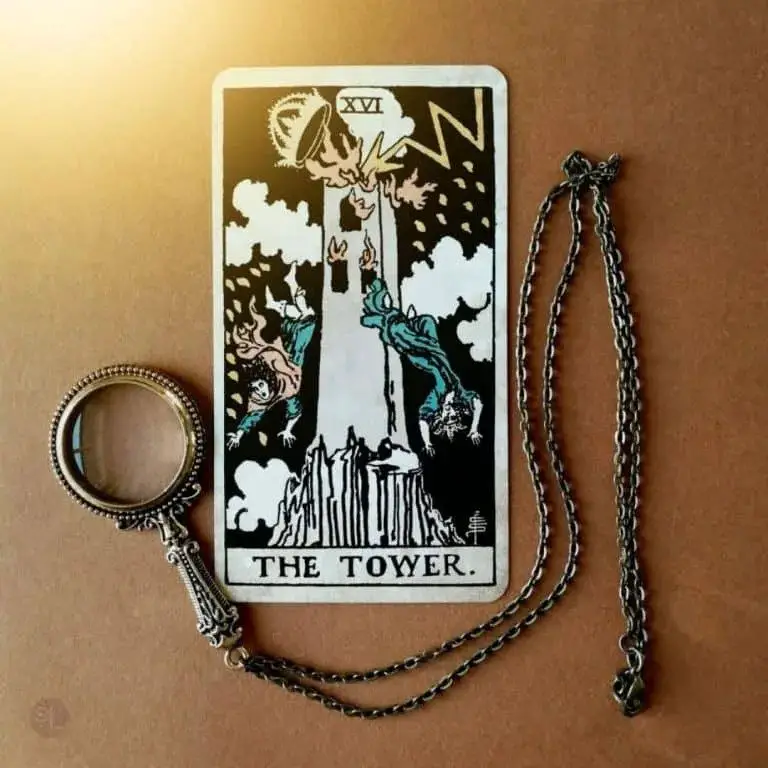
IN SUMMARY
Whenever we talk about the Tarot and if it is dangerous, evil, or sinister, the answer is always the same – regardless of angle or viewpoint: no, it is not. There are circumstances when they can be of harm, though, as everything in life.
Don’t let the Tarot be be-all and end-all. You have the power to make your own decisions. No one can force you to do anything, not the Tarot or anything else. The Tarot cannot change anything if you don’t act on it and do it yourself. In that sense, it is harmless regardless of the message.
You steer the ship. That is what the Tarot is made for – helping you make decisions and alter course if needed. The
Tarot is not magic – we are magic. Depending on our intent, we can use the cards for good and evil. The cards are cards with pictures on them. It’s inside of us the magic lives and happens.
THE DEFINITIONS IN THIS ARTICLE ARE BASED ON THE RIDER WAITE DECK AND SYSTEM.
Recent Post
- Tarot Court Cards: What They AreNot sure what tarot court cards are or look like? No worries, in this article, you learn everything you need to know to identify and understand them.
- 5 Powerful Tarot Spreads for Dream InterpretationThe 5 most potent tarot spreads for interpreting your dreams. A list of common symbols is included.

